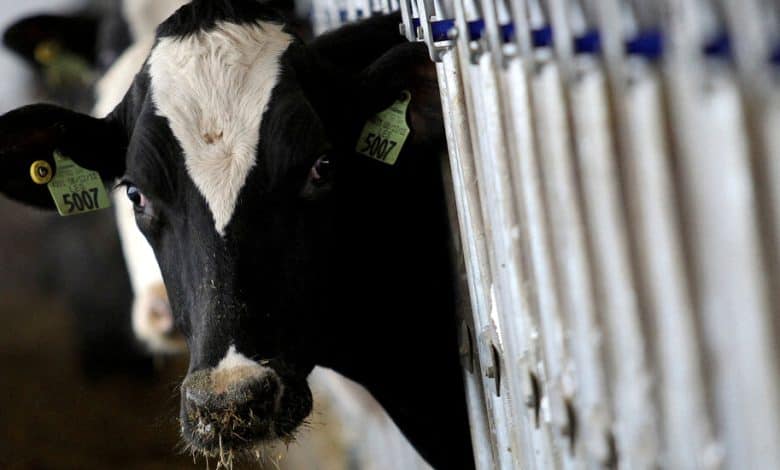Bird Flu Virus Found in Beef Tissue

Beef tissue from a sick dairy cow has tested positive for the bird flu virus, federal officials said on Friday.
The cow had been condemned to be culled because it was sick, and the meat did not enter the food supply, according to the U.S. Department of Agriculture. The department continued to stress that the commercial food supply remained safe.
But the positive test, which came as part of an ongoing federal study of beef safety, raises concerns about whether the virus might make its way into the commercial beef supply, posing a health risk to humans.
So far, the U.S.D.A’s Food Safety and Inspection Service has tested tissue samples from 96 dairy cows that had been condemned because of signs of disease. Just one cow tested positive, the department said. Meat from condemned cows is not allowed in the commercial food supply.
The agency is in the process of testing additional muscle samples.
It has not found virus in ground beef samples collected from retail outlets in states where cows have tested positive.
Earlier this month, the agency released results from an experimental study in which high concentrations of the virus were put into very large beef patties — 300 grams, compared to a typical burger size of 113 grams. The researchers found no virus present in the meat when they cooked the burger to 160 degrees Fahrenheit, the internal temperature of a well-done burger, or 145 degrees Fahrenheit, the temperature of a burger cooked to medium.
However, there was virus present in rare burgers, cooked to 120 degrees, although at greatly reduced levels; the agency said cooking to that temperature “substantially inactivated the virus.”
“All indications are: You cook your food, even if there’s virus in there, it will kill it,” said Stacey Schultz-Cherry, a virologist and influenza expert at St. Jude Children’s Research Hospital.
Food safety experts have expressed particular concern about the risk of transmission through raw milk.
Food safety experts recommend always thoroughly cooking meat to prevent infection from other more common pathogens such as salmonella, listeria and E.coli. “Those food safety recommendations were in store long before H5N1 became an issue, and they should always be our basic standard,” said Dr. Keith Poulsen, director of the Wisconsin Veterinary Diagnostic Laboratory at the University of Wisconsin-Madison.
